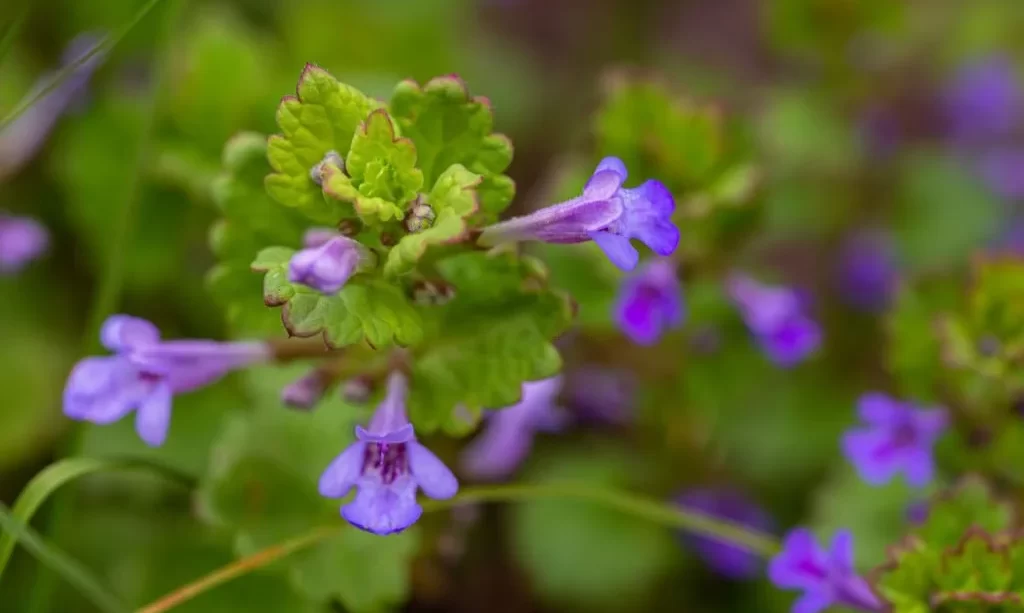Creeping Charlie, scientifically known as Glechoma hederacea, is a familiar sight in gardens, lawns, and shaded corners. Its heart-shaped leaves and clusters of small violet flowers give it a distinctive charm. Yet, beyond its role as a ground cover, a question often arises among curious individuals: Is creeping charlie edible? In this exploration, we delve into the world of this ubiquitous plant to uncover its culinary potential and shed light on whether it’s safe to incorporate into our diets. Join us on this journey as we navigate the landscape of creeping charlie and its possible place on our plates.
Identifying Creeping Charlie
To understand the potential edibility of creeping charlie, it’s essential to first recognize this plant. Creeping charlie is characterized by its scalloped, kidney-shaped leaves, often with a glossy appearance. It tends to creep along the ground, forming a low carpet of greenery. In the spring, it produces small, tubular, purple-blue flowers that add a touch of color to the landscape. This resilient ground cover thrives in moist, shaded areas, making it a common resident in gardens and lawns. While its aesthetic appeal and ability to control erosion are well-known, the question remains: Can these leaves find a place in our salads or teapots, or are they best appreciated from a distance? Let’s explore further to find out.
Historical Uses of Creeping Charlie
Creeping Charlie, also known as ground ivy, has a history that stretches beyond its role as a ground cover. Throughout the ages, it has been recognized for its medicinal properties and as a valuable herb in traditional folk medicine. Its leaves were brewed into herbal teas, believed to offer relief from various ailments, including respiratory issues and digestive discomfort. Historical records also indicate its use as a topical remedy for skin conditions.
Beyond its medicinal uses, creeping charlie served practical purposes. Its dense growth pattern made it an effective ground cover, particularly in shaded areas where other plants struggled to thrive. It helped control soil erosion and prevented weeds from taking over gardens and cultivated spaces. Thus, creeping charlie has a historical legacy that extends beyond its culinary potential.
Is Creeping Charlie Edible?
The question of whether creeping charlie is edible is a nuanced one. While some adventurous foragers and herbal enthusiasts have experimented with incorporating it into salads and herbal teas, there are important considerations to bear in mind. Creeping charlie does contain certain aromatic compounds that can contribute to its flavor. However, it also contains potentially harmful substances, and some individuals may experience allergic reactions when consuming it.
The safety of consuming creeping charlie depends on several factors, including individual sensitivities, plant maturity, and growing conditions. Furthermore, there’s always the risk of contaminants, such as pesticides or pollutants, if it’s harvested from non-organic or contaminated areas. Therefore, anyone considering the culinary use of creeping charlie should exercise caution, conduct thorough research, and consider consulting with experts in foraging and plant identification to ensure a safe and enjoyable experience. While its historical uses are intriguing, the edibility of creeping charlie comes with a series of precautions and concerns that should not be overlooked.
Precautions and Concerns
When contemplating the consumption of creeping charlie, it’s vital to take precautions and be mindful of potential concerns. Here are a few key considerations:
- Plant Identification: Ensure you can accurately identify creeping charlie to avoid any toxic look-alike plants.
- Individual Sensitivities: Like many edible plants, some people may be allergic or sensitive to creeping charlie. It’s wise to sample a small amount first if you’re trying it for the first time.
- Growing Conditions: The safety of consuming creeping charlie depends on where it’s grown. Avoid harvesting from areas that may be contaminated with pesticides, herbicides, or pollutants.
- Plant Maturity: Young leaves may be less bitter and more palatable than older ones. Experimenting with different growth stages may yield better culinary results.
Culinary Uses and Recipes
Creeping charlie, if deemed safe for consumption, can find its way into various culinary creations. Here are a few ideas:
- Salads: Young creeping charlie leaves can be added to salads to impart a unique flavor.
- Herbal Teas: Its aromatic qualities make it a potential addition to herbal tea blends. Combine it with other herbs for a fragrant infusion.
- Garnish: Use small sprigs or leaves as a decorative garnish for dishes and beverages.
Here’s a simple recipe to get you started: Creeping Charlie Herbal Infusion Ingredients:
- 1-2 teaspoons of dried creeping charlie leaves
- 1 cup of boiling water
Instructions:
- Place the dried creeping charlie leaves in a teapot or cup.
- Pour boiling water over the leaves.
- Allow it to steep for about 5-10 minutes.
- Strain and enjoy your homemade herbal tea.
Conclusion: Exploring Creeping Charlie’s Edibility
In our exploration of creeping charlie’s potential edibility, we’ve uncovered a plant with a rich history, both as a medicinal herb and as a practical ground cover. However, when it comes to culinary use, caution is paramount. While some adventurous individuals may choose to incorporate creeping charlie into their diet, it’s vital to do so responsibly.
The edibility of creeping charlie comes with a set of precautions and concerns, including the potential for allergies, variable flavor profiles, and the need for careful plant identification. Furthermore, the safety of consuming creeping charlie heavily relies on where and how it’s grown. Foragers and culinary enthusiasts should always prioritize safety and consider consulting with experts in foraging and plant identification to ensure a positive and safe experience.
In the end, the decision to include creeping charlie in your culinary repertoire should be made with a deep understanding of the plant, a sense of adventure, and an unwavering commitment to safety and responsible foraging practices. Whether you choose to explore its culinary potential or simply admire it as a garden ground cover, creeping charlie remains a plant with a fascinating history and a unique place in the world of herbs and edibles.



